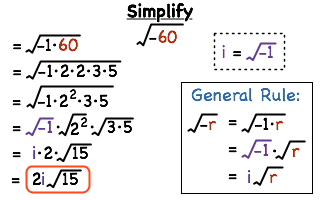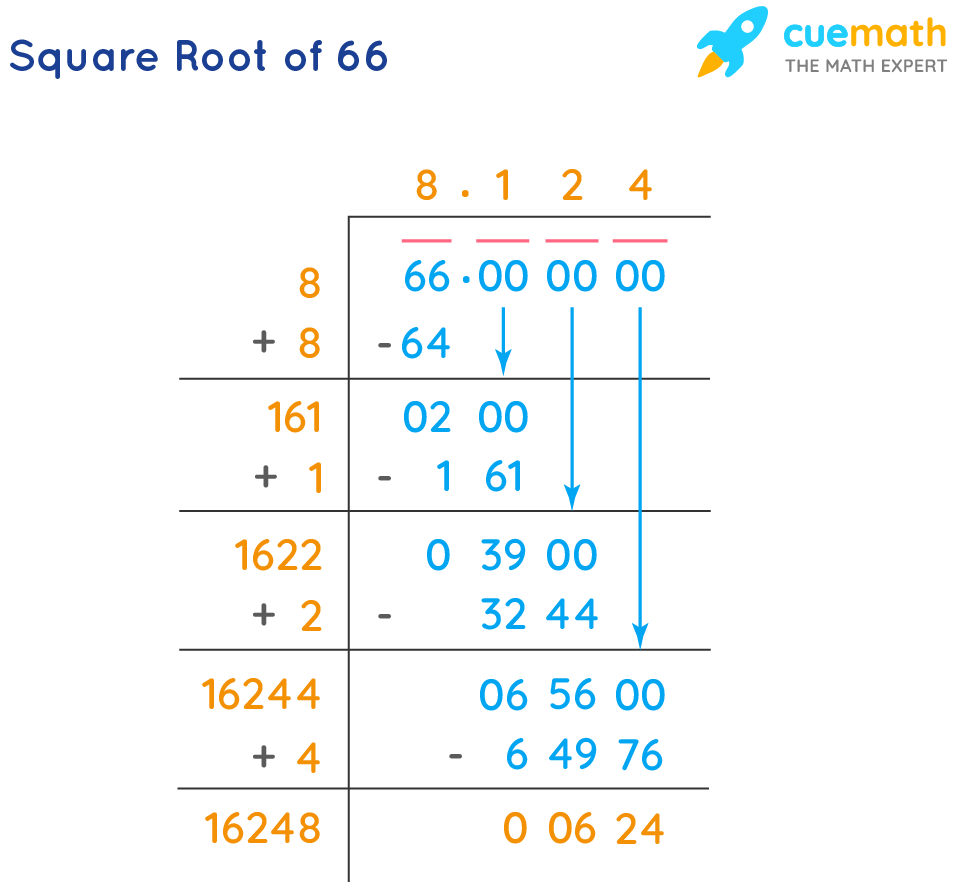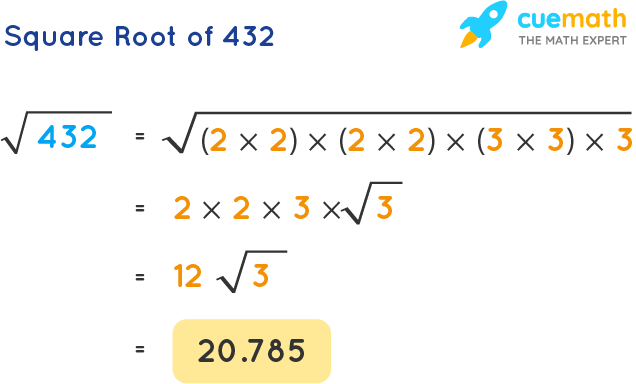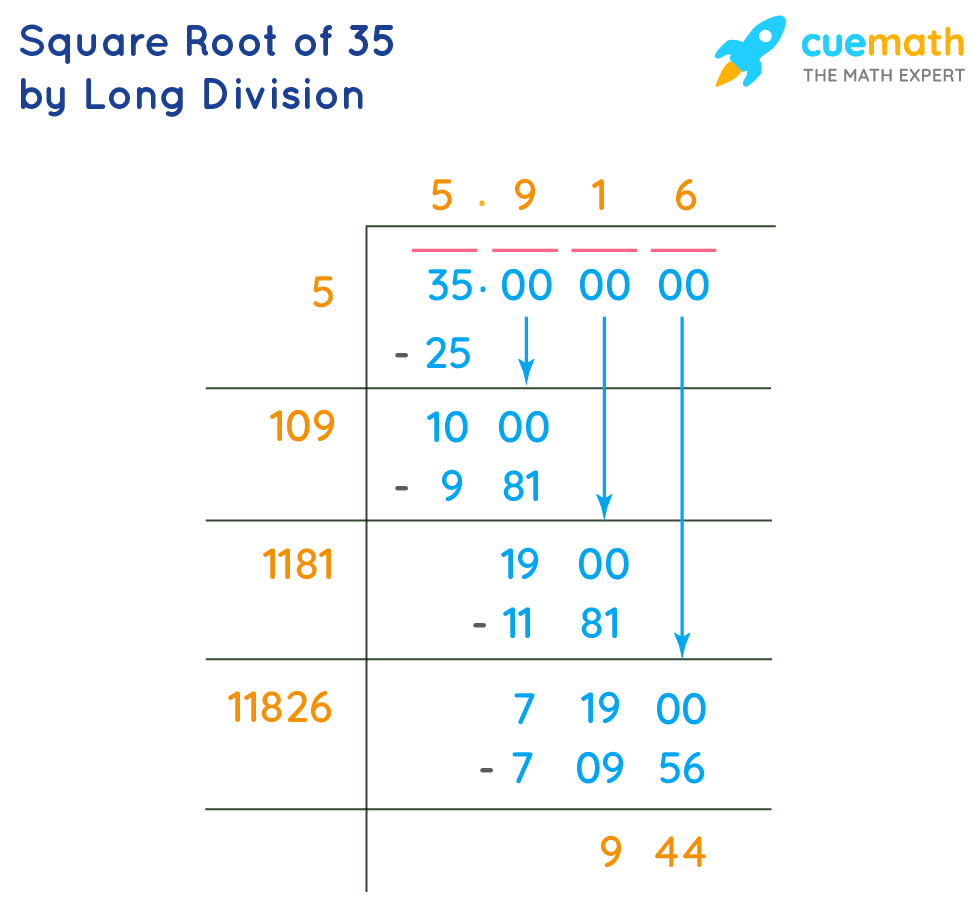Topic how to simplify the square root of a negative number: Understanding how to simplify the square root of a negative number is crucial in mathematics. This guide will take you through the process of using imaginary numbers, specifically the unit 'i', to simplify these square roots effectively. Dive in to learn step-by-step methods, key concepts, and practical examples to master this important skill.
Table of Content
- Simplifying the Square Root of a Negative Number
- Introduction to Simplifying Square Roots of Negative Numbers
- The Concept of Imaginary Numbers and the Imaginary Unit \(i\)
- Examples and Practice Problems
- Common Mistakes to Avoid
- Applications of Imaginary Numbers in Complex Numbers
- Advanced Topics: Complex Plane and Quadratic Equations
- Summary and Further Reading
- YOUTUBE: Xem video Hướng Dẫn Cách Tìm Căn Bậc Hai Của Số Âm để hiểu thêm về chủ đề này.
Simplifying the Square Root of a Negative Number
Simplifying the square root of a negative number involves the use of the imaginary unit \(i\), where \(i = \sqrt{-1}\). The process is similar to simplifying the square root of a positive number, with the additional step of factoring out the negative sign as \(i\).
Steps to Simplify the Square Root of a Negative Number
- Identify the negative number inside the square root.
- Factor out \(-1\) from the radicand (the number inside the square root).
- Rewrite \(\sqrt{-1}\) as \(i\).
- Simplify the remaining square root if possible.
Example 1: Simplifying \(\sqrt{-9}\)
Let's simplify \(\sqrt{-9}\) step by step:
- Identify the negative number inside the square root: \(\sqrt{-9}\).
- Factor out \(-1\): \(\sqrt{-9} = \sqrt{-1 \cdot 9}\).
- Rewrite \(\sqrt{-1}\) as \(i\): \(\sqrt{-1} \cdot \sqrt{9} = i \cdot \sqrt{9}\).
- Simplify the remaining square root: \(i \cdot 3 = 3i\).
Therefore, \(\sqrt{-9} = 3i\).
Example 2: Simplifying \(\sqrt{-50}\)
Now let's simplify \(\sqrt{-50}\):
- Identify the negative number inside the square root: \(\sqrt{-50}\).
- Factor out \(-1\): \(\sqrt{-50} = \sqrt{-1 \cdot 50}\).
- Rewrite \(\sqrt{-1}\) as \(i\): \(\sqrt{-1} \cdot \sqrt{50} = i \cdot \sqrt{50}\).
- Simplify the remaining square root: \(i \cdot \sqrt{25 \cdot 2} = i \cdot \sqrt{25} \cdot \sqrt{2} = i \cdot 5 \cdot \sqrt{2} = 5i \sqrt{2}\).
Therefore, \(\sqrt{-50} = 5i \sqrt{2}\).
General Formula
For any negative number \(-a\), the square root can be simplified using the formula:
\[
\sqrt{-a} = i \sqrt{a}
\]
Practice Problems
- Simplify \(\sqrt{-4}\).
- Simplify \(\sqrt{-16}\).
- Simplify \(\sqrt{-36}\).
- Simplify \(\sqrt{-81}\).
Answers:
- \(\sqrt{-4} = 2i\)
- \(\sqrt{-16} = 4i\)
- \(\sqrt{-36} = 6i\)
- \(\sqrt{-81} = 9i\)

READ MORE:
Introduction to Simplifying Square Roots of Negative Numbers
Understanding how to simplify the square root of negative numbers is essential in mathematics, especially when dealing with complex numbers. The process involves using the imaginary unit \(i\), which is defined as the square root of -1. This introduction will guide you through the basic concepts and steps necessary to simplify square roots of negative numbers.
When we encounter a negative number under a square root, we need to express it in terms of \(i\). The steps are as follows:
- Identify the negative number under the square root.
- Rewrite the negative number as a product of -1 and a positive number.
- Take the square root of the positive number.
- Multiply the result by \(i\) to get the simplified form.
Let's look at some examples:
- Example 1: Simplify \(\sqrt{-9}\)
- Rewrite -9 as \(9 \cdot -1\).
- \(\sqrt{-9} = \sqrt{9 \cdot -1}\).
- \(\sqrt{9} \cdot \sqrt{-1} = 3i\).
- Example 2: Simplify \(\sqrt{-16}\)
- Rewrite -16 as \(16 \cdot -1\).
- \(\sqrt{-16} = \sqrt{16 \cdot -1}\).
- \(\sqrt{16} \cdot \sqrt{-1} = 4i\).
Using these steps, you can simplify any square root of a negative number by converting it into a form involving the imaginary unit \(i\).
The Concept of Imaginary Numbers and the Imaginary Unit \(i\)
Imaginary numbers are essential in mathematics, especially when dealing with the square roots of negative numbers. An imaginary number is a complex number that can be written as a real number multiplied by the imaginary unit \(i\). The imaginary unit \(i\) is defined as the square root of -1.
Using \(i\), we can express the square root of any negative number. For example, the square root of -25 can be expressed as 5i since \((5i) \times (5i) = -25\).
Here is a step-by-step guide to simplifying the square roots of negative numbers:
- Identify the negative number under the square root.
- Express the negative number as the product of a positive number and -1.
- Take the square root of the positive number using the known methods for calculating square roots of positive numbers.
- Multiply the result by \(i\) to get the square root of the negative number.
For example, let's simplify the square root of -9:
- Express -9 as \(9 \times -1\).
- The square root of 9 is 3.
- Therefore, the square root of -9 is \(3i\).
Similarly, to simplify \(\sqrt{-16}\):
- Express -16 as \(16 \times -1\).
- The square root of 16 is 4.
- Thus, \(\sqrt{-16}\) simplifies to \(4i\).
Understanding imaginary numbers and the imaginary unit \(i\) is crucial as it forms the foundation for further exploration of complex numbers and their applications in various fields such as engineering and physics.
Examples and Practice Problems
Understanding how to simplify the square root of a negative number is essential in mastering complex numbers. Here are detailed examples and practice problems to help you get a good grasp on this concept.
-
Example 1: Simplifying \(\sqrt{-7}\)
- Identify the negative number under the square root: \(\sqrt{-7}\)
- Express the negative number as the product of a positive number and \(-1\): \(\sqrt{-1 \cdot 7}\)
- Take the square root of the positive number: \(\sqrt{7}\)
- Multiply by the imaginary unit \(i\): \(i \sqrt{7}\)
Therefore, \(\sqrt{-7} = i \sqrt{7}\).
-
Example 2: Simplifying \(\sqrt{-9}\)
- Identify the negative number under the square root: \(\sqrt{-9}\)
- Express the negative number as the product of a positive number and \(-1\): \(\sqrt{-1 \cdot 9}\)
- Take the square root of the positive number: \(\sqrt{9} = 3\)
- Multiply by the imaginary unit \(i\): \(3i\)
Therefore, \(\sqrt{-9} = 3i\).
-
Example 3: Simplifying \(\sqrt{-12}\)
- Identify the negative number under the square root: \(\sqrt{-12}\)
- Express the negative number as the product of a positive number and \(-1\): \(\sqrt{-1 \cdot 4 \cdot 3}\)
- Take the square root of the positive factors: \(\sqrt{4} = 2\)
- Combine the results: \(2i \sqrt{3}\)
Therefore, \(\sqrt{-12} = 2i \sqrt{3}\).
Practice Problems
- Simplify \(\sqrt{-5}\)
- Simplify \(\sqrt{-36}\)
- Simplify \(\sqrt{-48}\)
- Simplify \(\sqrt{-50}\)
Common Mistakes to Avoid
When simplifying the square root of a negative number, it is crucial to be aware of common mistakes to ensure accurate results. Here are some pitfalls to avoid:
- Ignoring the Imaginary Unit \(i\): One of the most common mistakes is to forget to include the imaginary unit \(i\) when dealing with the square root of a negative number. Always remember that \(\sqrt{-a} = i\sqrt{a}\).
- Incorrectly Applying Radical Rules: The rule \(\sqrt{a} \cdot \sqrt{b} = \sqrt{ab}\) does not apply when both \(a\) and \(b\) are negative. This rule is only valid for non-negative radicands. For example, \(\sqrt{-3} \cdot \sqrt{-2} \neq \sqrt{6}\).
- Misunderstanding the Simplification Process: When simplifying expressions involving the square root of a negative number, ensure each step is correctly followed. For instance, \(\sqrt{-12}\) should be simplified as follows:
- Express the negative number as a product: \(\sqrt{-12} = \sqrt{(-1) \cdot 12}\).
- Separate the terms: \(\sqrt{-1} \cdot \sqrt{12}\).
- Simplify the square root of the positive number: \(i \cdot \sqrt{4 \cdot 3} = i \cdot 2 \cdot \sqrt{3} = 2i\sqrt{3}\).
- Failing to Fully Simplify: Always simplify the radicand as much as possible. For example, \(\sqrt{-50}\) should be simplified to \(5i\sqrt{2}\) rather than stopping at \(i\sqrt{50}\).
Avoiding these common mistakes will help ensure that your solutions are accurate and fully simplified when working with the square roots of negative numbers.

Applications of Imaginary Numbers in Complex Numbers
Imaginary numbers play a crucial role in various fields of mathematics, engineering, and physics. They extend the concept of real numbers and allow for the solution of equations that have no real solutions. By introducing the imaginary unit \( i \), defined as \( \sqrt{-1} \), we can explore complex numbers and their applications.
Complex numbers are written in the form \( a + bi \), where \( a \) is the real part and \( bi \) is the imaginary part. Here are some key applications of imaginary numbers in complex numbers:
- Electrical Engineering: Complex numbers are used to represent and analyze AC circuits, where the impedance and phase angles are conveniently expressed in terms of real and imaginary components.
- Signal Processing: In signal processing, complex numbers are used to represent waveforms and Fourier transforms, facilitating the analysis of frequency components in signals.
- Quantum Mechanics: Imaginary numbers are essential in quantum mechanics for describing wave functions, probability amplitudes, and the behavior of particles at the quantum level.
- Control Systems: In control systems engineering, complex numbers are used to design and analyze system stability and response characteristics.
- Fluid Dynamics: Complex potential theory in fluid dynamics utilizes complex numbers to solve problems involving fluid flow and potential fields.
Understanding the applications of imaginary numbers in these contexts allows for a deeper appreciation of their utility and importance in both theoretical and practical aspects of science and engineering.
Advanced Topics: Complex Plane and Quadratic Equations
When working with complex numbers, we often need to visualize them to fully understand their properties and behaviors. This visualization is done using the complex plane, also known as the Argand plane. In this section, we will explore how complex numbers are represented on this plane and their applications in solving quadratic equations.
The Complex Plane
The complex plane is a two-dimensional plane where each point represents a complex number. The horizontal axis (real axis) represents the real part of the complex number, while the vertical axis (imaginary axis) represents the imaginary part. A complex number \( a + bi \) is plotted at the point \((a, b)\).
For example, the complex number \(3 + 4i\) is plotted at \((3, 4)\) on the complex plane.
Here is a visual representation of the complex plane:
| Imaginary Axis | \(bi\) |
| \(a + bi\) | Real Axis |
| \(a\) |
Solving Quadratic Equations with Complex Solutions
Quadratic equations are equations of the form \(ax^2 + bx + c = 0\). When the discriminant (\(b^2 - 4ac\)) is negative, the solutions to the quadratic equation are complex numbers. These solutions can be found using the quadratic formula:
\[ x = \frac{-b \pm \sqrt{b^2 - 4ac}}{2a} \]
When the discriminant is negative, the square root of a negative number involves the imaginary unit \(i\). Therefore, the solutions will be complex numbers.
Example
Consider the quadratic equation \(x^2 + 4x + 13 = 0\). Here, \(a = 1\), \(b = 4\), and \(c = 13\).
- Calculate the discriminant: \(b^2 - 4ac = 4^2 - 4 \cdot 1 \cdot 13 = 16 - 52 = -36\).
- Since the discriminant is negative, the solutions will be complex. Using the quadratic formula: \[ x = \frac{-4 \pm \sqrt{-36}}{2 \cdot 1} \] \[ x = \frac{-4 \pm 6i}{2} \] \[ x = -2 \pm 3i \]
Thus, the solutions to the quadratic equation are \(x = -2 + 3i\) and \(x = -2 - 3i\).
Visualizing Solutions on the Complex Plane
These solutions can be represented on the complex plane as points \((-2, 3)\) and \((-2, -3)\). This visualization helps in understanding the nature of the roots of the quadratic equation.
Further Applications
Understanding the complex plane and solving quadratic equations with complex solutions are fundamental in various fields such as engineering, physics, and computer science. Complex numbers are used in signal processing, control systems, quantum mechanics, and many other areas where waveforms and oscillations are analyzed.
With this knowledge, you can explore more advanced topics such as the polar form of complex numbers, Euler's formula, and the Mandelbrot set. These concepts provide deeper insights into the fascinating world of complex numbers and their applications.
Summary and Further Reading
Understanding how to simplify the square root of a negative number involves recognizing the role of imaginary numbers. Imaginary numbers are represented by the imaginary unit \(i\), where \(i^2 = -1\).
To simplify the square root of a negative number \( \sqrt{-a} \), where \( a > 0 \), we use the property of imaginary numbers. This simplification results in \( \sqrt{-a} = i\sqrt{a} \).
Further exploration into complex numbers and their applications in mathematics, engineering, and physics reveals the importance of understanding imaginary numbers. They are fundamental in solving quadratic equations and describing phenomena that involve oscillatory behavior.
For more in-depth understanding, consider exploring textbooks on complex analysis and applications of complex numbers in various fields of science and engineering.
Xem video Hướng Dẫn Cách Tìm Căn Bậc Hai Của Số Âm để hiểu thêm về chủ đề này.
How To Find The Square Root of a Negative Number | Hướng Dẫn Cách Tìm Căn Bậc Hai Của Số Âm
READ MORE:
Xem video Đơn Giản Hóa Căn Âm Sử Dụng Đơn Vị Ảo i, sqrt(-24) để hiểu cách thức này.
Algebra 2 - Đơn Giản Hóa Căn Âm Sử Dụng Đơn Vị Ảo i, sqrt(-24)















